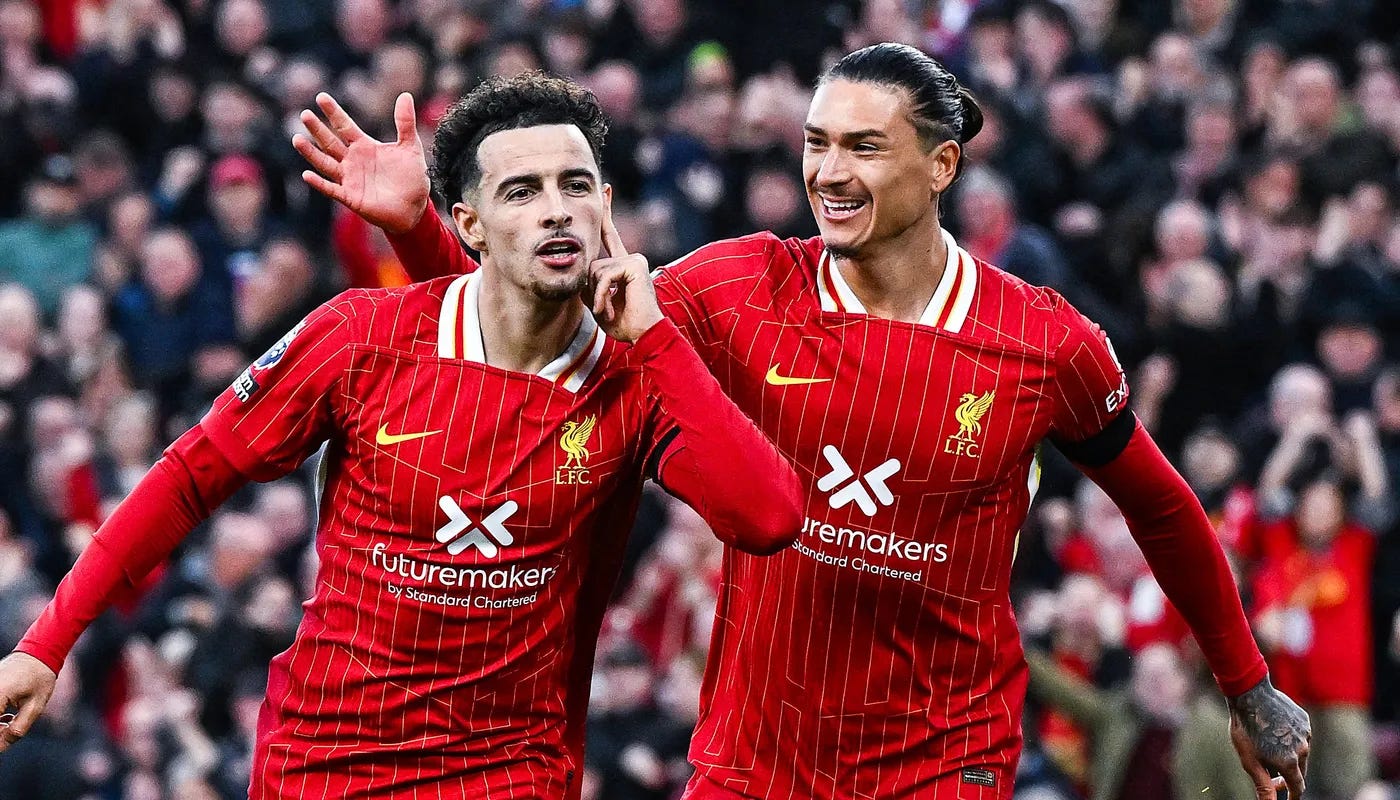Without 2024 Transfers, Liverpool Have A Load of 'New' Players
Coming of age, adapting, adjusting, developing, emerging, maturing.
As I always say, I like a good transfer as much as the next fan; but I also love to see players develop, or settle, or be reborn or retooled in a new role, or evolve in various ways.
I’ve also shown via years of research that after a big spend, it’s the season after where clubs generally tend to see an improvement in league points, with the right manager. (With the wrong manager: <insert farting noise>)
Liverpool spent c.£170m (maximum with clauses activated) on a new midfield in 2023; in 2024, we can see those same players are now worth £300m. In a year, it could be worth more. Add the younger ones, and it could be a £500m midfield, bought for about a third of that price.
I argued way back in 2019/20 that signing players can initially set you back in terms of cohesion. Get a slow start to the season in the +90 points era, and you’re almost out of the race already.
I’m not saying this side is ready to match those record-breakers; but this is an even better start in terms of 10 wins from 11 in all competitions, compared to two ‘draws’ and a defeat five years ago – albeit in Community Shield (lost on penalties), European Super Cup (won on penalties) and losing at Napoli (comparable with going to AC Milan, where the Reds battered them).
The first eight league games were all won (including ‘easy’ games like Norwich City, Southampton and Burnley, as well as beating Chelsea and Arsenal).
But this frankly ludicrous idea that Old Trafford is not a true test can be shown to be nonsense when, as the 9th league game of 2019/20, it was only drawn 1-1, and Man United sat 14th in the table after the game.
Liverpool only drew with a late Adam Lallana goal. This United side are 12th after eight games. It’s United away; it’s never a given, even when they’re rubbish; just as their rubbish sides often beat Liverpool during the halcyon years, and vice versa.
The development of existing players (and the natural evolution of a team) should be one of the great joys of football, but people often want churn, with shiny new object syndrome and a disposable culture.
I felt at least two players properly came of age at the weekend, and various others have done so since Arne Slot arrived, in the way they may have done had Jürgen Klopp stayed; time is vital, both spent at a club, and as a young player, to develop.
But new ideas can help. Especially – and this is what slightly surprised me about Slot – as the new manager went as far as spending ages studying even the training sessions of Klopp and Pep Lijnders; adding to the ideas, while keeping what worked. There hasn’t been as much possession as I expected, with a bit more pragmatism.
I remember reading about a specific game in Holland where Slot’s team were planning to frequently play a long diagonal over the opposition full-back, and they trained all week for it. He doesn’t need to train Liverpool’s back line to look for those press-beating longer passes, as it’s already inbuilt. It’s one option, as Slot has improved on the midfield build-up.
Liverpool are back to that 2019/20 ethos of great shape, great work-rate, great game-management (not expending too much energy with narrow leads), and the next era of stars are emerging.
Remember, in 2019/20, the Liverpool midfield was seen as dull.
**The majority is article is for paying TTT Main Hub subscribers only.**
Keep reading with a 7-day free trial
Subscribe to The Tomkins Times - Main Hub to keep reading this post and get 7 days of free access to the full post archives.



